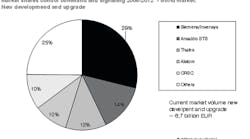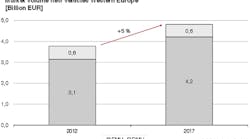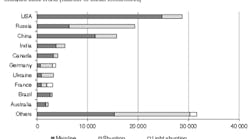The African Railway Market appears stable. Passenger transport plays an increasingly important role in its development. Essential rail corridors as well as new routes and networks for commuter transport and urban transit are under way. The market volume of products and services in the field of railway technology currently amounts to approx. EUR 4.8 billion and will grow by an annual 2.4% to approx. EUR 5.4 billion by 2020. These are the major findings of the new market study "The African Railway Market“, published by SCI Verkehr GmbH (Germany).
Over the last ten years, numerous African states were able to, step by step, stabilize economically and socially – in many cases based on foreign investment in exploiting their mineral deposits. Low commodity prices, the flattened economic growth of the principal trading partner China, as well as political and social unrest are challenging further growth.
The railway market reacted with structural change: An increasing number of developments for mixed passenger and freight transport as well as commuter and urban transit networks have joined the well-known projects for mine-port rail links, many of which have been postponed or delayed, but so far only few of them have been shelved. The study contains more than 40 portraits of current rail projects on the continent.
Besides raw materials, Africa’s largest resource is a relatively young and increasingly urbanized population. Urbanization is currently at 40% and growing by an annual 0.6%. “High population density provides good conditions for developing efficient urban transit,” stresses Maria Leenen, CEO of SCI Verkehr GmbH. In 2015, a new light rail transit network opened in Addis Abeba; similar systems are being developed in places like Lagos (Nigeria), Abidjan (Côte d’Ivoire), and numerous Algerian cities.
Building new and modernizing existing road, energy and rail infrastructure remains an urgent task. Nearly all new routes and networks feature standard gauge, which is also the globally most widely spread gauge. In increase I performance is also mirrored by an over-average market growth of the signalling and communication sectors. In parallel, the fleets of multiple units, passenger coaches and freight wagons are being rejuvenated and partly extended.
Doing business in these projects requires a precise knowledge of the actual political, economic and financial conditions and, above all, perseverance. “Bringing together the essential prerequisites at the right time in the right place is crucial”, Leenen says. “Those who can exercise this patience will ultimately reap the rewards.”







